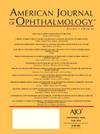长期早产儿视网膜病变结果与强制性筛查间隔和分级连续性在一个大容量的四级中心。
IF 4.1
1区 医学
Q1 OPHTHALMOLOGY
引用次数: 0
摘要
目的或目的总结一家四级教学医院和区域性早产儿视网膜病变(ROP)转诊中心的筛查模式和治愈率,强调强制性筛查间隔方案和分级连续性。设计:回顾性队列研究方法、干预或检验:对2013-2024年在一家第四教学医院接受住院ROP筛查的所有患者进行回顾性回顾和描述性分析。本研究采用的筛查模型是由指定的分级员连续筛查,不进行交接,并强制间隔进行双眼间接检眼镜(BIO)筛查。比较的变量包括估计胎龄、出生体重、每次筛查时的体重、先天与先天状况、筛查日期和间隔、治疗、风险类别和地点。多元比较采用方差分析检验,二元比较采用双样本t检验。主要结果测量:治疗保证的ROP发生率和视网膜脱离率结果:在研究期间,1,860例患者进行了15,798次检查。1651例(88.8%)患者仅接受了四名筛查者中的一名的检查。对于四位筛查者中的每一位,98.1%至99.3%的检查间隔为每周一次或更频繁。患者来自34家不同的医院,其中334例(18.0%)为早产儿。外生(vs先天)患者平均EGA(±SD)较年轻(27.8±3.0周vs 29.0±3.0周),平均出生体重(±SD)较低(1066.9±408克vs 1181.4±416克)。接受最多治疗的筛查者也看到了更多的高风险(纳米和微早产儿)婴儿,这些婴儿的治疗率为19.4%。体积随时间增加,但未发现季节性趋势(p=0.51)。100例(5.4%)需要治疗,更多的是先天性患者(4.6%先天性vs 9.0%先天性,p=0.002)。没有人出现视网膜脱离。结论BIO - ROP筛选模型的12年数据显示,该模型依赖于单一筛选者的连续性护理和强制每周筛查,结果良好。在这个筛选模型中,没有婴儿死于ROP致盲。分级连续性可能有助于降低干预率。本文章由计算机程序翻译,如有差异,请以英文原文为准。
Long-Term Retinopathy of Prematurity Outcomes with Mandated Screening Interval and Grader Continuity at a High-Volume Quaternary Center.
OBJECTIVE OR PURPOSE
To summarize screening patterns and treatment rates from a quaternary teaching hospital and regional retinopathy of prematurity (ROP) referral center, highlighting mandated screening interval protocols and grader continuity.
DESIGN
Retrospective cohort study METHODS, INTERVENTION, OR TESTING: A retrospective review and descriptive analysis of all patients who underwent inpatient ROP screening within a quaternary teaching hospital from 2013-2024. The screening model employed here used continuous screening by assigned graders without handoff and mandated screening interval with binocular indirect ophthalmoscopy (BIO). Variables compared included estimated gestational age, birth weight, weight at each screening, inborn vs outborn status, screening date and intervals, treatment, risk category, and location. ANOVA testing was performed for multiple comparisons, and two-sample T-testing was performed for binary comparisons.
MAIN OUTCOME MEASURE
Incidence of Treatment-Warranted ROP and Retinal Detachment Rate RESULTS: Within the study period, 15,798 examinations occurred for 1,860 patients. 1,651 (88.8%) patients were only examined by one of four screeners. For each of the four screeners, between 98.1% to 99.3% of examination intervals were weekly or more often. Patients came from 34 different hospitals and 334 (18.0%) were outborn. Outborn (vs inborn) patients had significantly (p < 0.005) younger mean (±SD) EGA (27.8±3.0 weeks vs 29.0±3.0 weeks) and lower mean (±SD) birthweight (1066.9± 408 grams vs 1181.4 ± 416 grams). The screener who accounted for the most treatments also saw more high risk (nano- and micro-premature) infants, with a 19.4% treatment rate of these infants. Volume increased over time, but no seasonal trends were identified (p=0.51). A hundred (5.4%) required treatment, more often those who were outborn (4.6% inborn vs 9.0% outborn, p=0.002). None developed a retinal detachment.
CONCLUSION
Twelve years of data from a BIO ROP screening model which relies on single screeners for continuity of care and mandated weekly screening demonstrated excellent outcomes. No infants succumbed to blindness from ROP within this screening model. Grader continuity may have contributed to lower intervention rates.
求助全文
通过发布文献求助,成功后即可免费获取论文全文。
去求助
来源期刊
CiteScore
9.20
自引率
7.10%
发文量
406
审稿时长
36 days
期刊介绍:
The American Journal of Ophthalmology is a peer-reviewed, scientific publication that welcomes the submission of original, previously unpublished manuscripts directed to ophthalmologists and visual science specialists describing clinical investigations, clinical observations, and clinically relevant laboratory investigations. Published monthly since 1884, the full text of the American Journal of Ophthalmology and supplementary material are also presented online at www.AJO.com and on ScienceDirect.
The American Journal of Ophthalmology publishes Full-Length Articles, Perspectives, Editorials, Correspondences, Books Reports and Announcements. Brief Reports and Case Reports are no longer published. We recommend submitting Brief Reports and Case Reports to our companion publication, the American Journal of Ophthalmology Case Reports.
Manuscripts are accepted with the understanding that they have not been and will not be published elsewhere substantially in any format, and that there are no ethical problems with the content or data collection. Authors may be requested to produce the data upon which the manuscript is based and to answer expeditiously any questions about the manuscript or its authors.

 求助内容:
求助内容: 应助结果提醒方式:
应助结果提醒方式:


